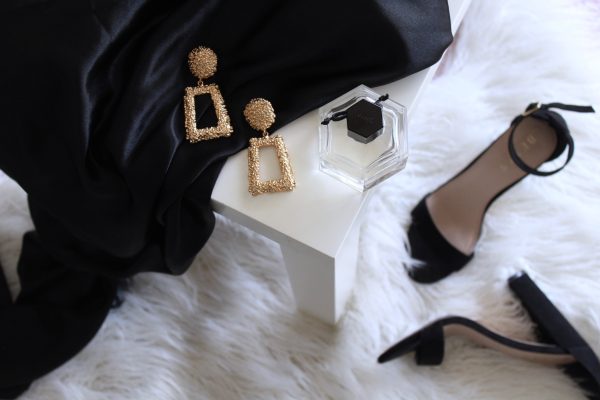A Journey Down Memory Lane
Let’s step back into the late ’90s and early 2000s. The era was marked by frosted tips, cargo pants, and, notably, the popularisation of the tramp stamp. The tramp stamp, also known as a lower back tattoo, became a bold fashion statement for many, with high-profile celebrities like Britney Spears and Pamela Anderson sporting the look.
My friend Linda got her tramp stamp on her 18th birthday. She went to a local tattoo shop in Melbourne, choosing a tribal design that stretched across her lower back. Linda was ecstatic. She felt the tattoo not only enhanced her allure but was also a tangible symbol of her burgeoning independence.
From a Mark of Rebellion to a Taboo
As the millennium unfolded, the narrative around tramp stamps began to shift. The term itself, rooted in sexist and derogatory connotations, tainted the trend. It went from being a fashion-forward choice to a mark of promiscuity, attracting stigma and judgement. As a result, many women started to feel self-conscious about their ink. Linda, too, felt the societal pressure and began to cover her tattoo, even on scorching summer days in Brisbane.
Beyond the Stereotype: Sociocultural Significance
While the term ‘tramp stamp’ is undeniably problematic, it’s important to delve deeper into its cultural significance. In various cultures, lower back tattoos carry symbolic meanings. For instance, in Polynesian culture, the lower back is considered a sacred part of the body, and its adornment is perceived as a mark of strength and power.
Linda, my dear friend, began to question the societal disdain for her tattoo. She found solace in the stories of women from all walks of life, including the escorts at Ivy Societe. These women, unapologetic about their choices, began to reclaim the narrative, turning it into a symbol of feminine power and autonomy.
A Resurgence in Pop Culture
In recent years, the tramp stamp has been making a comeback, largely thanks to pop culture and a newfound appreciation for Y2K fashion. From Kendall Jenner to Miley Cyrus, modern-day celebrities are embracing the trend with open arms, and so is the general public. On social media platforms like Instagram and TikTok, influencers proudly show off their lower back tattoos, encouraging followers to reclaim the style.
Tattoo parlours in bustling cities like London and Cairns are witnessing a surge in demand for lower back tattoos. But this time, the narrative is different. Women aren’t merely following a trend; they’re making a statement of ownership over their bodies, flipping the derogatory connotations on their head.
Shifting Aesthetics and Tattoos: The Role of Social Media
In the age of social media, the perception of beauty is continuously shifting. Platforms like Instagram, Facebook, and TikTok have played an instrumental role in challenging traditional beauty norms and creating spaces for alternative aesthetics to thrive. Lower back tattoos, or tramp stamps, are no exception.
These platforms have helped remove the stigma associated with tramp stamps, celebrating them as unique works of body art. They offer a platform where individuals can share their inked stories, from tales of defiance to symbolising personal milestones. This public display of once-controversial tattoos has played a part in normalising them, and in doing so, has fostered an environment of acceptance and positivity.
Celebrity Influence and the Tramp Stamp
Undeniably, celebrities have an enormous impact on fashion trends, and this extends to tattoos. A notable recent instance is Lady Gaga’s lower back tattoo. Her decision to embrace this style has encouraged a legion of fans to view tramp stamps in a new light.
Moreover, celebrities like Rihanna, who sports a unique henna-inspired design on her hand, and Cara Delevingne, with a lion on her finger, have shown us that there’s more to tattoos than their placement. They’ve reinforced that each tattoo, whether it’s a tramp stamp or not, has a story to tell, a story that is deeply personal and evocative.
From Tribal Designs to Delicate Art: Evolution of Tramp Stamp Designs
In the early days, tribal designs were the go-to choice for lower back tattoos. Today, we’re seeing more variety in tramp stamp designs, reflecting individual preferences and evolving trends in the tattoo industry.
Geometric patterns, botanical illustrations, and minimalistic symbols are being sought after, with tattoo artists like those in Canberra and Newcastle showcasing their artistic versatility. The design evolution of tramp stamps is indicative of the ongoing transformation of the trend—moving from a mass fashion statement to personalised, meaningful pieces of body art.
While these designs have changed, the core concept remains—tramp stamps, like all tattoos, are a form of self-expression. Whether they’re viewed as fashion statements, symbols of rebellion, or tokens of empowerment, their significance ultimately boils down to individual interpretation and experience.
The Future of the Tramp Stamp
The resurgence of the tramp stamp provides an interesting opportunity to discuss the evolution of societal norms. While the term itself carries negative undertones, its recent popularity serves as a testament to changing attitudes and perceptions.
As we move towards a more accepting society, we should remember that every tattoo tells a story, and those narratives are as unique as the individuals who wear them. Just like the escorts of Ivy Societe, who boldly embrace their individuality, we must remember to celebrate diversity and champion personal choice.
I’d like to believe that Linda’s tramp stamp has transcended its original meaning. Now, it stands as a bold proclamation of her individuality and her audacious spirit. It represents a journey of self-exploration and acceptance that has, ultimately, culminated in empowerment.
The tramp stamp may have started as a trend, but it has evolved into something much greater—a potent symbol of autonomy and a beacon of change.
So, are tramp stamps still a thing? Absolutely. But their resurgence isn’t merely about reviving a fashion trend—it’s about transforming a once taboo symbol into a token of empowerment, of owning one’s narrative and proudly wearing it for the world to see.


